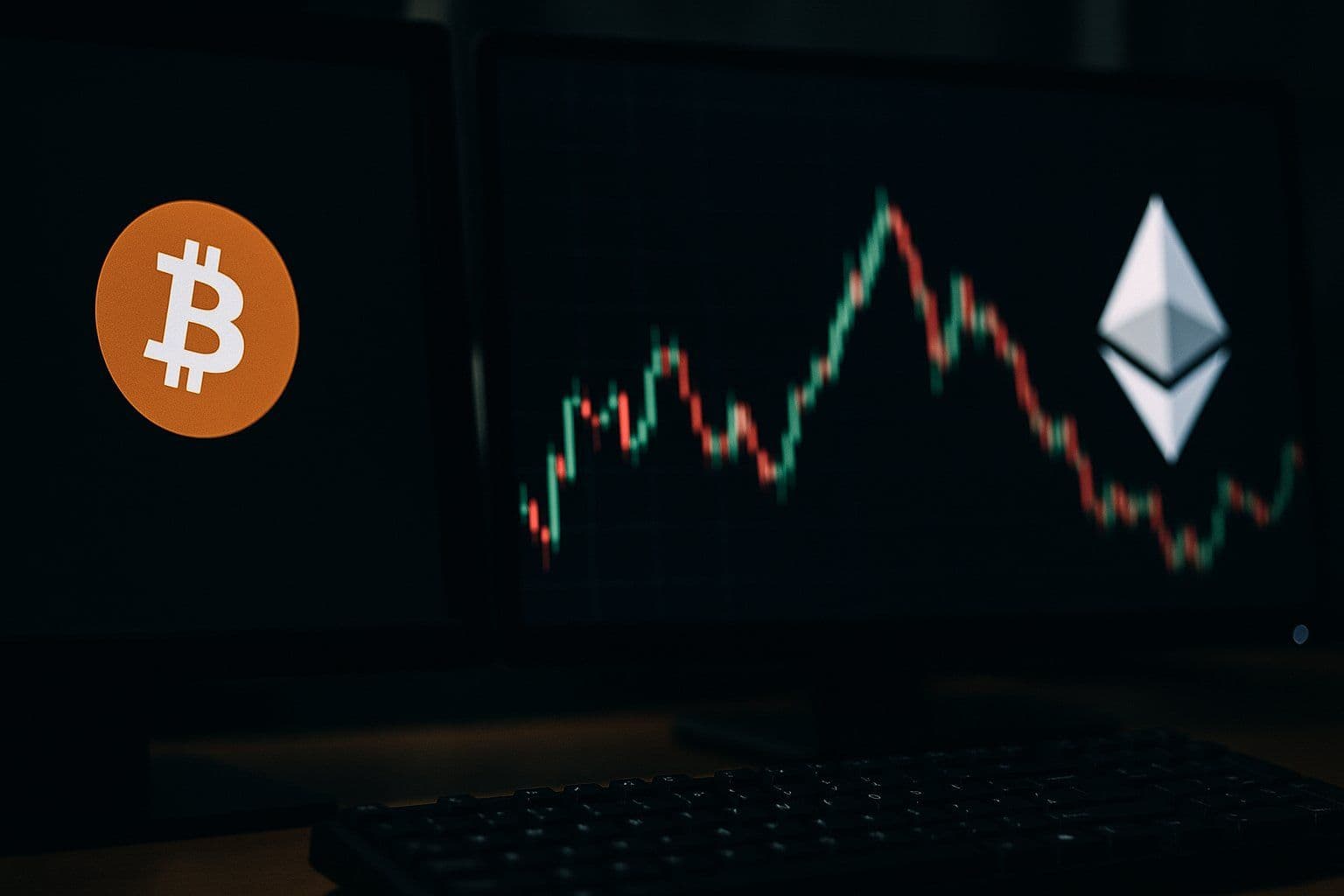Global Markets Seek Stability
The digital-asset market is still shaking off last week’s tariff shock. As Bitcoin and Ethereum attempt to recover, smaller tokens are facing a far tougher reality: liquidity has evaporated across dozens of exchanges, revealing structural weaknesses in many projects.
Analysts tracking crypto market trends say the correction has created a liquidity divide between projects with genuine network activity and those inflated by speculative leverage. Average order-book depth for mid-cap altcoins fell 37 percent week-over-week, according to data providers, the steepest contraction since 2022.
“When liquidity drains this quickly, you discover which ecosystems have real users,” said one London-based trader. “Speculative capital can vanish overnight — organic demand cannot.”
Survivors: Projects With Utility
While much of the altcoin universe bled double digits, several networks have held their ground.
Solana (SOL) remains a standout, supported by high throughput and consistent developer growth. Transaction volumes on Solana-based DEXs surged even as prices slid, suggesting active use rather than idle holding.
Polygon (MATIC) also weathered the storm thanks to stable transaction fees and continued integration into enterprise chains. And Chainlink (LINK) showed resilience as new oracle deployments expanded cross-chain connectivity.
Analysts believe these survivors share two traits: verifiable on-chain use and institutional interest. Their network metrics, tracked in ongoing reports at blockchain performance analysis, show steady adoption even through downturns.
Casualties of the Sell-Off
Many others weren’t so fortunate. Liquidity collapsed in Arbitrum, Optimism, and Fantom, where derivatives markets saw forced liquidations wipe out thin order books. Market makers withdrew exposure after funding rates turned sharply negative, leaving price discovery fragmented.
One exchange executive described the scene as “a race to the bottom for liquidity.” Pairs that routinely moved tens of millions daily now trade in the low six figures.
Regulatory uncertainty amplified the panic. Rumors of upcoming enforcement actions resurfaced, reminding traders how sensitive sentiment remains to policy shifts. Analysts covering regulation and policy news note that this interplay between compliance fears and market depth has become a defining pattern of the 2025 cycle.
Data Signals Deeper Weakness
The Altcoin Liquidity Index, which measures aggregate market depth across 100 tokens, has dropped to its lowest reading in eighteen months. Funding rates on perpetual swaps remain negative, implying traders expect further downside.
Volatility indicators have spiked as well. The Crypto Fear & Greed Index slipped into “Extreme Fear,” matching levels from the 2021 correction.
“Liquidity droughts tend to end abruptly — but not gently,” said a Singapore-based quant researcher. “When depth vanishes, even small trades move markets.”
Stablecoins Absorb the Shock
Capital is migrating into USDT and USDC, which now account for more than 70 percent of all trading pairs by value. The rotation suggests investors are opting for safety while waiting for direction.
Stablecoin inflows usually precede eventual recovery rallies, but only when sentiment improves. Analysts tracking stablecoin dynamics point out that large inflows without redeployment can also indicate prolonged caution rather than readiness to re-enter risk assets.
Market Structure: Centralized vs. Decentralized Liquidity
The latest crash has reignited debate over whether DeFi’s liquidity pools are more resilient than centralized order books.
On-chain metrics show automated market makers continued to function smoothly while several centralized exchanges experienced slippage and halted withdrawals. Liquidity providers in protocols such as Uniswap and Curve adjusted fees dynamically, preventing full market freezes.
DeFi analysts following the decentralized finance sector say this performance gap could accelerate migration toward hybrid liquidity models where CEXs mirror on-chain mechanisms for transparency.
What Comes Next for Traders
Professional desks are watching three indicators for signs of stabilization:
- Exchange depth on tier-one venues — a pickup in resting orders would signal renewed confidence.
- Funding normalization — shrinking negative rates could attract arbitrage capital back into altcoins.
- On-chain activity growth — rising wallet counts and transaction frequency across active ecosystems.
Until those metrics turn, traders expect a slow-grind consolidation phase rather than a swift rebound. “This isn’t a panic capitulation — it’s a confidence crisis,” one Zurich-based fund manager said.
Reports from crypto market analysis show that algorithmic funds are still sidelined, waiting for volatility to compress before deploying liquidity back into risk assets.
Why This Liquidity Shock Matters
This episode underscores a maturing yet fragile market. Liquidity concentration remains heavily skewed toward a handful of exchanges and stablecoin pairs, making altcoins more vulnerable to macro shocks.
It also reinforces a broader truth: only networks with consistent on-chain demand can survive prolonged risk aversion. The rest depend on external liquidity — and lose relevance when that dries up.
Market strategists argue that this cycle could mark a transition from speculative token rotation toward sustainable ecosystem investing. As one analyst put it, “The market is finally rewarding usage over hype.”
Lessons From the Liquidity Collapse
- Altcoin order-book depth plunged to its lowest level since 2022.
- Solana, Polygon, and Chainlink outperformed peers thanks to real-world utility.
- Regulatory uncertainty compounded sell-offs across smaller exchanges.
- Stablecoin flows show investors retreating to safety.
- DeFi liquidity pools proved more stable than centralized platforms.


Comments